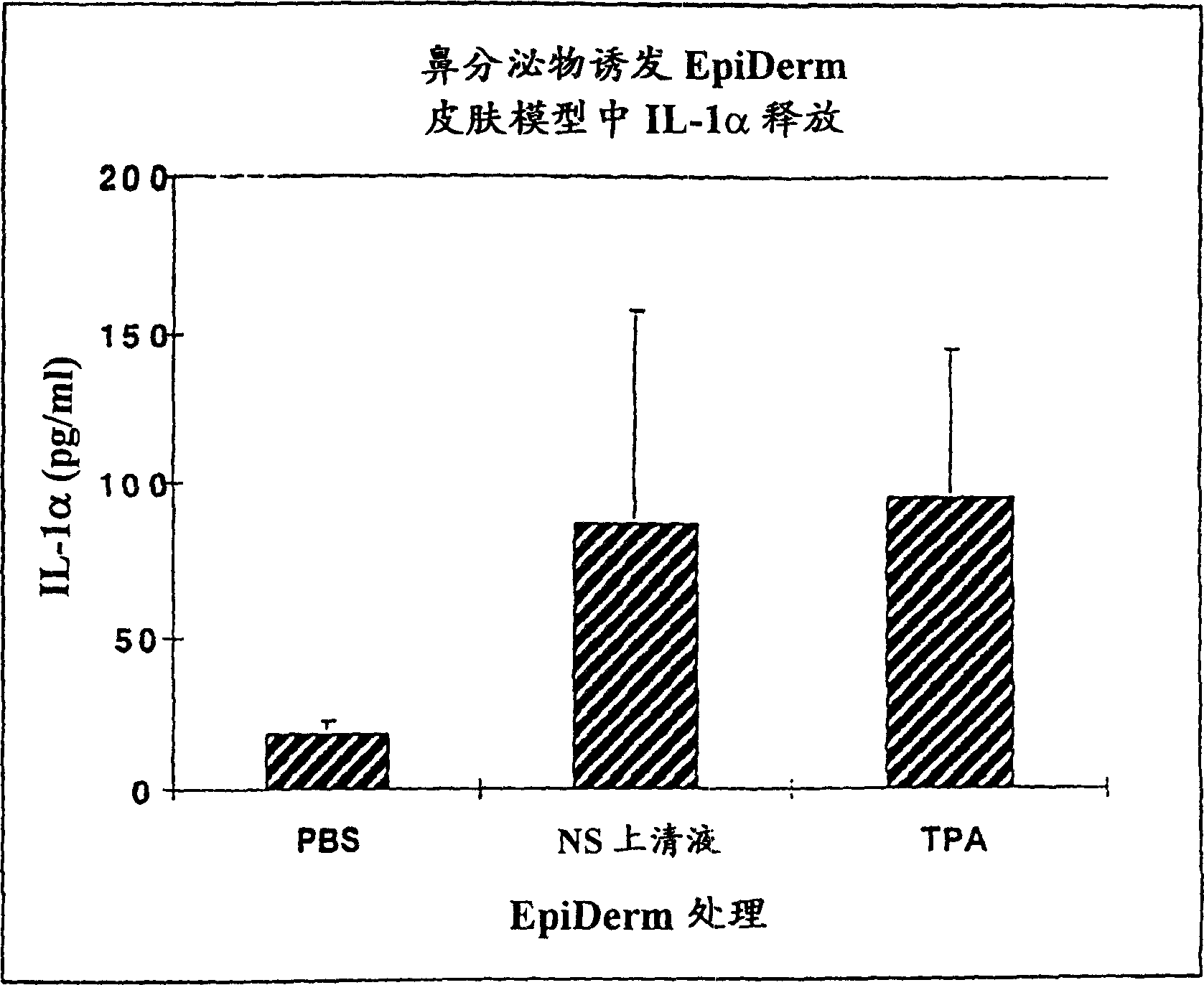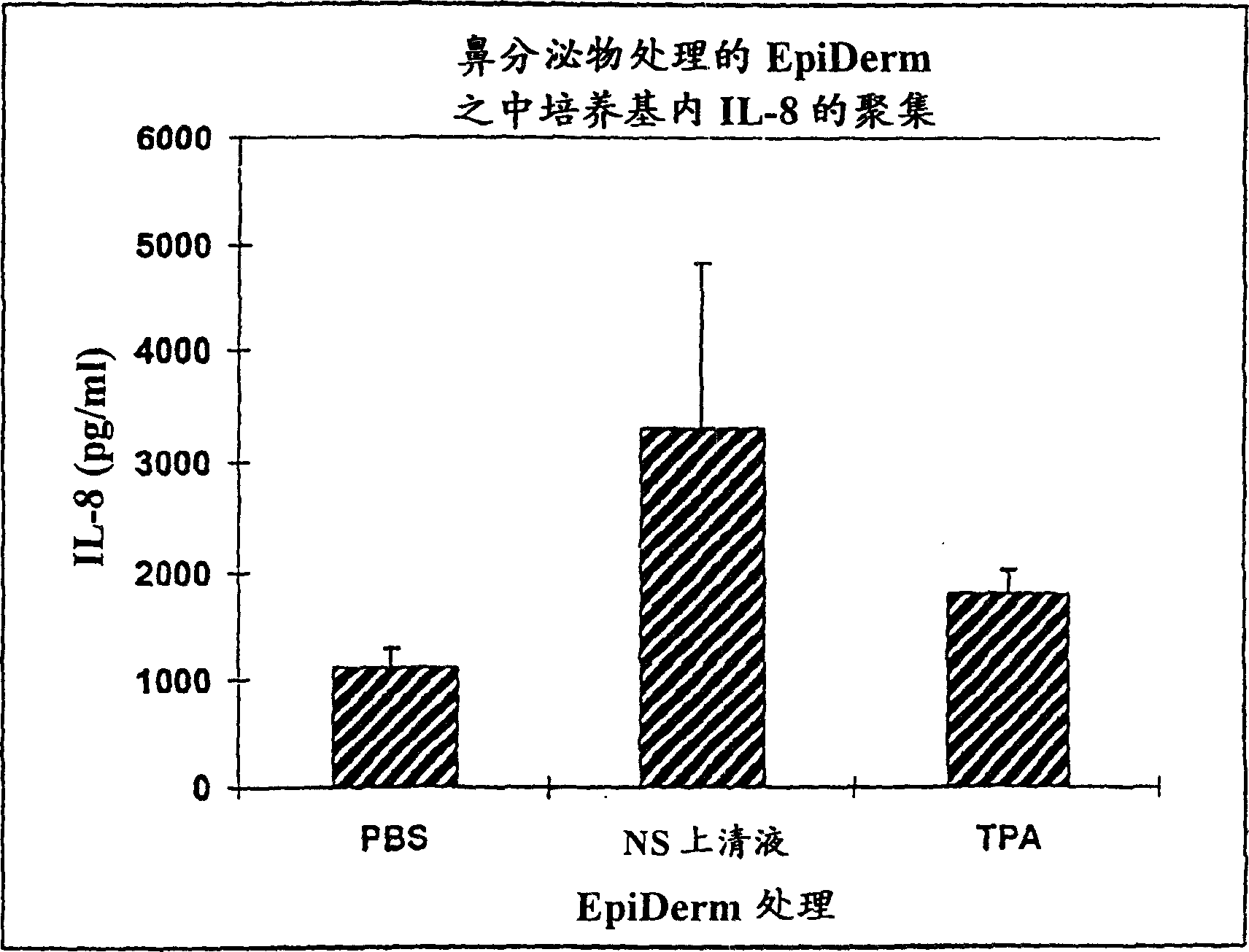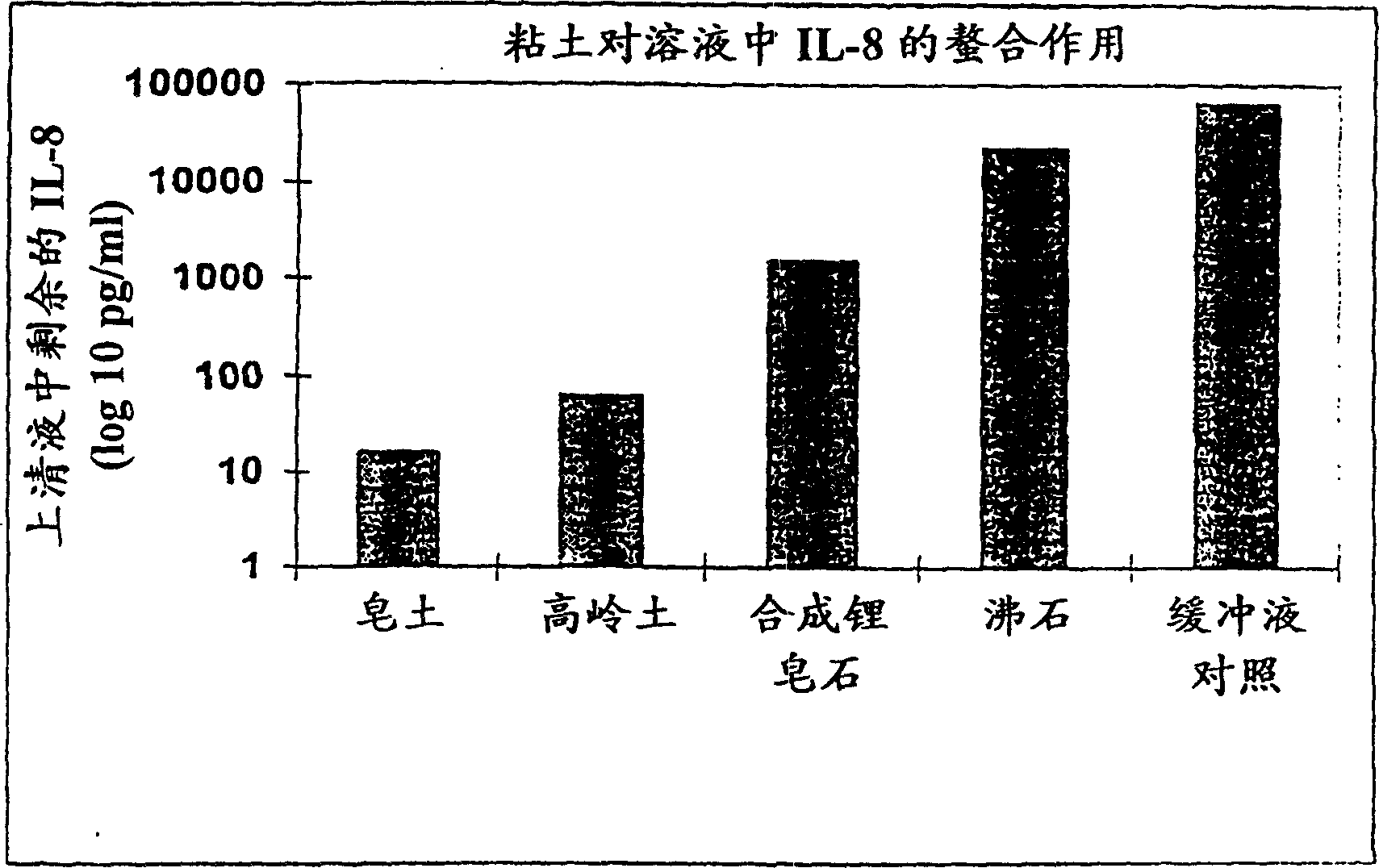Facial tissue compsn. and method of use for sequestration of nasal secretion skin irritants
A technology of skin irritation and facial tissues, applied in skin care preparations, drug combinations, skin diseases, etc., can solve problems such as skin inflammation, improve the health of nasolabial skin and prevent skin inflammation
- Summary
- Abstract
- Description
- Claims
- Application Information
AI Technical Summary
Problems solved by technology
Method used
Image
Examples
Embodiment 1
[0110] Pro-inflammatory responses induced by nasal secretions in a human skin model
[0111] Using EpiDerm TM The skin model (MatTek Co.; Ashland, MA; Cat# EPI-200-HCF) was used to determine the pro-inflammatory (PI) properties of nasal secretions (NS). The experiment is to add the collected NS to EpiDerm TM In the model, the induced marker compounds indicative of signs of skin inflammation were then quantified. These markers include EpiDerm TM Primary cytokine (IL-1α) and secondary cytokine (IL-8) produced by keratinocytes present in the model.
[0112] Nasal secretions were obtained from multiple individuals and stored at -70°C until pooled. Thawed NSs were kept at 4 °C until used in the EpiDerm model. NS samples were collected in 50 ml polystyrene centrifuge tubes. Immediately after mixing, the nasal secretions were centrifuged at 13K xg for 5 minutes. Transfer the supernatant to a new 50ml polystyrene centrifuge tube. The pellet was sonicated for 1 minute with a Vi...
Embodiment 2
[0117] Suitability of different clays as chelating agents for skin irritants present in nasal secretions
[0118] A suspension (10 mg / ml) of unmodified clay was prepared in a microcentrifuge tube (Eppendorf tube). The fluid used to suspend the clay was 50 mM phosphate buffer, pH 7.4, containing 150 mM NaCl, 50 ng / ml IL-8 and 0.1% bovine serum albumin (BSA). Each clay suspension, bentonite (Sigma Cat. No. B-3378), kaolin (Sigma Cat. No. K-7375), zeolite (Sigma Cat. No. Z-3125), and laponite clay ( LAP RD MICRO Cat. No. 12566-62028; Southern Clay Products, Inc.). Control tubes containing only IL-8 solution without clay were prepared.
[0119] The resulting centrifuge tubes were incubated on a shaker for 2 hours at room temperature. The centrifuge tube was then centrifuged at 10,000 rpm on a microcentrifuge Eppendorf 5415C for 10 minutes, and the supernatant was transferred to a new centrifuge tube and frozen at -70°C for the following analysis.
[0120] The samples were thaw...
Embodiment 3
[0122] Clay chelators block IL-8 penetration in human skin models
[0123] The skin model used in this experiment is MatTek's (Ashland, MA) EpiDerm TM Skin phantom (Catalog # EPI-200-HCF). The clays used were bentonite (Sigma catalog number B-3378) and kaolin (Sigma K-7375).
[0124] Four 10 ug bottles of IL-8 (Sigma 1-1645) were rehydrated with 250 μl of distilled water to give approximately 1.00 ml each of a 40 μg / ml rhIL-8 solution.
[0125] Clay suspensions were prepared by adding phosphate buffer to a pre-weighed quantity of clay to obtain a 20 mg / ml suspension of bentonite and kaolin. 2.0 and 0.2 mg / ml suspensions of the two clays were prepared by serial 10-fold dilutions of the original clay suspension.
[0126] Two suspensions of interleukin-8 (IL-8) and clay were prepared at 2.0x final concentration. For the co-precipitation step, 100 μl IL-8 stock solution (2x) and 100 μl clay suspension (2x) were mixed in a 1.5 ml microcentrifuge tube. Add a 25 μl aliquot of sa...
PUM
| Property | Measurement | Unit |
|---|---|---|
| diameter | aaaaa | aaaaa |
Abstract
Description
Claims
Application Information
 Login to View More
Login to View More - R&D
- Intellectual Property
- Life Sciences
- Materials
- Tech Scout
- Unparalleled Data Quality
- Higher Quality Content
- 60% Fewer Hallucinations
Browse by: Latest US Patents, China's latest patents, Technical Efficacy Thesaurus, Application Domain, Technology Topic, Popular Technical Reports.
© 2025 PatSnap. All rights reserved.Legal|Privacy policy|Modern Slavery Act Transparency Statement|Sitemap|About US| Contact US: help@patsnap.com



